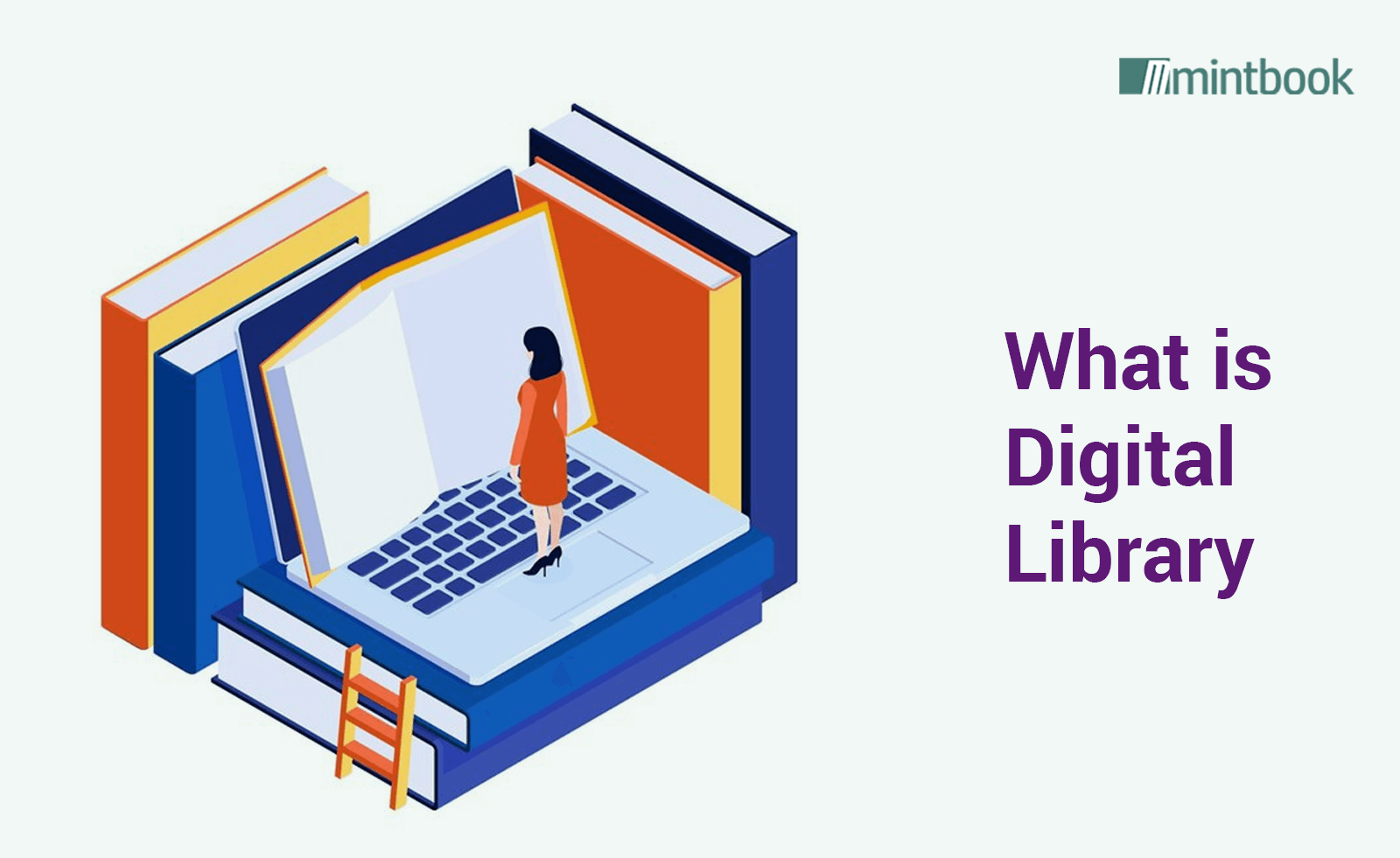Several studies suggest a steady decrease in library visits per year. Many analysts believe that the popularity of community libraries is impacted directly by the rise of digital libraries. Bloggers and content writers describe a digital library in various ways – an online database of digital objects, a virtual repository of learning resources, and a collection of digital materials.
Unlike conventional libraries, digital libraries deliver digital content to readers over the Internet in various formats and languages. Readers can gather the required information anytime and anywhere by accessing the digital library on a desktop, laptop, smartphone, or tablet. Also, they can consume online content in various formats – eBooks, journals, videos, audio, and simulation.
The on-demand availability and accessibility make readers prefer accessing digital libraries to visiting conventional libraries. However, a digital library differs from a physical library in several aspects. While discussing what is a digital library, we must understand what makes it different from physical libraries. At the same time, we must consider the key features or characteristics of a digital library.
11 Important Features or Characteristics of a Digital Library
24/7 Availability
When visiting a physical library, readers have to keep in mind its opening and closing hours. However, readers can access a digital library without any time restrictions. They can access the digital library anytime and anywhere over the Internet. Also, they can access online library resources without installing cloud-based digital library software on their devices.
Cross-Device Access
The new-age digital libraries are designed by adopting a mobile-first approach. The mobile-first approach enables readers to access the digital library on the go using smartphones and tablets. At the same time, a reader can access the digital library seamlessly on desktop and laptop computers. Hence, a reader can access the digital library seamlessly using his preferred device.
Multiformat Content
As mentioned earlier, digital libraries deliver content to readers in multiple formats – eBooks, journals, quizzes, video, audio, and simulations. Hence, it becomes easier for readers to acquire knowledge by accessing content in their preferred way. For instance, a reader can understand the same topic or concept by reading eBooks, watching videos, or listening to audio.
Multilingual Content
Popular digital libraries are designed with multilingual support. While configuring or customizing the digital library, an administrator can enable readers to access content in their native languages. The multilingual support makes digital libraries popular with readers whose native or mother tongue is not English.
Curated Content
Readers and researchers understand a topic deeply by reading thought leadership content. In addition to being written by subject matter experts, the thought leadership content covers varying viewpoints and perspectives on a topic. Leading digital libraries share thought leadership content with readers by curating content from online sources. They further use artificial intelligence (AI) algorithms to curate relevant content from reliable online sources.
Learner Engagement
Most users access digital libraries on mobile devices. Several studies have highlighted how mobile devices shorten the attention span of users. Also, readers can acquire knowledge only by avoiding cell phone distractions like social media, instant messages, text messages, and emails. Digital libraries foster learner engagement using gamification techniques. They encourage and motivate readers to learn using popular video game features like coins, badges, and scorecards.
Multi-User Access
While visiting a physical library, readers can access a printed book only when there is no wait time or hold time. Digital libraries enable readers to access the desired learning content without any restrictions. A large number of readers can access the cloud-based digital library simultaneously and seamlessly. Likewise, they can read eBooks or watch the video directly without interacting with others.
Information Retrieval
When visiting a community library, readers usually find relevant information by browsing through library catalogs and interacting with the librarian. Digital libraries enable readers to access relevant information in seconds by featuring intuitive search interfaces. The search interface enables users to find relevant content by entering topics or keywords. Also, readers can narrow down the search results using search filters.
Material Preservation
Physical libraries prolong the lifespan of printed books, vinyl records, cassettes, and other resources by carrying out preservation activities. They incur additional costs to preserve the physical learning resources for future generations. Digital libraries preserve learning resources without requiring specific activities. Learners can access older versions or editions of content by accessing a robust online content repository.
Automation
Physical libraries are managed by skilled librarians and support staff. They have to allocate funds to carry out library management tasks efficiently. However, digital libraries automate routine library management tasks like tracking and updating. Librarians can monitor learning resources and learner activities by generating reports based on real-time data.
Integration Capabilities
Educational institutions use the digital library as an essential eLearning tool to drive online and remote learning. Likewise, companies and startups reskill and upskill employees by setting up digital libraries. New-generation digital library software comes with application programming interfaces (APIs). APIs make it easier for organizations to integrate the digital library seamlessly with widely used eLearning or employee training tools.
Conclusion
While discussing what is a digital library, we must remember that digital libraries can be divided into relevant categories based on purpose and audience. For instance, educational institutions drive online learning and research by setting up academic digital libraries. On the other hand, corporate digital libraries enable companies and startups to train, reskill, and upskill employees by running various learning and development (L&D) projects.
Most organizations these days curtail upfront and ongoing costs by implementing cloud-based digital library software. In addition to accessing the software based on pay-as-you-use pricing plans, they customize and scale the cloud digital library according to their current needs. Also, most organizations these days set up unified learning platforms by integrating the SaaS application with learning management systems (LMS), online classroom software, and other eLearning tools.

